What does it take to be a bridgemaker?
"Everything you have."
Reading time: 9 minutes.
Can you serve a context where you radically don’t belong?
It’s my experience that the word “bridgemaker” is exclusively used with a positive connotation. I cannot think of any situation where I saw it used to indicate something negative.
It's as if the ability to connect parts that don’t talk to one another was universally seen as positive.
And, considering this age of increasing fragmentation, I'd say most people would agree that to be a bridgemaker is not just positive: it's important, and necessary.
But as I was thinking about this, a concept that I'm exploring lately came to mind: preparedness.
Through my practices, I see preparedness as our ability to cultivate ourselves regardless of what might or might not happen in the future. It's the ability to shift from the need to know, control and plan in order to feel ready, to focusing on practices that prepare us in deeper yet less specific way — emotionally, physically, mentally and spiritually.
And when I think about bridge making in the context of preparedness, I can’t help but ask myself:
since to be a bridgemaker is becoming a crucial function — are we truly aware of what it takes to be one?
Or are we getting lost in its positive glow – and when the time comes, we don't have enough muscle to hold the bridge up, or things together?
. . .
Anyone who is a bridgemaker knows that the outer perception of bridge making differs quite profoundly from the experience of being one.
The one thing everyone knows about bridge making is that it's about connecting cultures, sectors or groups that don’t generally interact with one another. I can feel you going "oh, so nice, so important". Yes.
But the one detail that seems to be missed by most is that it's not just that those sides don’t interact — often, if they did, it would not be in a good way.
And, as a bridgemaker, you are in the middle. Holding the tension between those two (or more) opposites.
Sometimes, the two realities you are bridging seem to co-exist only within you. And sometimes, what you represent is a trigger for one of them.
As I am writing this, that's where I'm standing.
I am not just holding the tension between cultures that don’t easily speak to one another. I'm working in a context that (funnily enough) is about bridge making, and my looks, background and character traits actively represent everything that one side sees as the source of the pain, suffering and damage inflicted on their culture.
It's not personal. Still, pretty delicate.
This piece on bridge making has been developing for a few weeks already, so as I found myself in this situation I knew what to do: what’s better than writing about bridge making from the hardest bridge making situation I’ve ever found myself in?
The one certainty I have is that bridge making is not new for me (but not less tricky, we'll get back this), and I do believe that it's one of the most important abilities we can cultivate in this historical moment.
Because if separation levels up, then so must we.
And because I'm nerdy and structure helps me think, I asked myself where I could start on this topic. 3 main things came to mind:
1. I don’t know if anyone actually chooses to be a bridgemaker.
2. It requires different skills, and it's mostly about struggling
3. There are different types of bridgemakers, and different ways to cultivate their traits
I'll expand on each of these in the upcoming newsletters.
Let's start with point 1. As one does.
. . . .
I don’t know if anyone chooses to be a bridgemaker.
To be a bridgemaker means that you participate to two (or more) different cultures, teams or realities. That while others seem to have a clear side they belong to, you don’t.
I am aware that things are a lot more nuanced than belonging to (for example) "culture A" or "culture B". But I also know that this side A / side B experience is very real for many of us.
There are two (or more) sides, and somehow – you belong to both.
And also, in a way, to none of them.
Yes, it can get lonely.
You’re like an outsider, but in both teams. You participate to both, but belong to none. Your behaviour doesn’t fully match either of the two sides: you have just enough recognisable traits for each of them to feel a resonance, but never enough for you to fully belong to any of them.
And is that a condition someone chooses?
Or is it the result of something innate — an organic tendency to just not fit in any one pre-existing established container, and enjoy very diverse things and activities?
Or is it the result of an engineered pattern of self-preservation by self-exclusion? Those of us that grew up in a context where belonging wasn’t an option, or wasn't safe, sometimes develop the pattern of making sure we never fully belong, anywhere. It just feels safer (familiar) that way.
I don’t have any answers to offer — only my direct experience.
I spent my entire life in the in-betweens.
In my case it was probably the result of a mix of things.
On one side, a genuine interest in a very diverse range of things. On the other, the self-preserving pattern to engineer my own exclusion – courtesy of bullying, early-life prolonged exposure to trauma in my family context, and the resulting PTSD.
For me, non-belonging became a copying mechanism, and it sticked around for much longer than necessary.
Yet – an entire life and career grew from my tendency and ability to live at the intersection of things: I've been a professional volleyball player but also a Fine Arts student, a tech activist but also spiritual, a for-impact entrepreneur but also passionate about psychology and media. I lived between places, and between the most diverse communities. The list goes on.
Today, I still find myself consistently drawn to situations that need bridge making.
Is it an un-conscious choice I'm making, out of familiarity? Is it life deciding that this ability to live in the in-betweens must be put to service, so I keep attracting and matching situations that need it?
As I said I don't have answers, only experience.
And, since this series aims to shed light on bridge making to identify how we might best cultivate this trait, I'd be interested in your experience too.
Are you a bridgemaker?
Do you feel like one?
What sides are you connecting, and how?
What helps you in the best and the hardest days of holding that tension between (what might feel like) opposites?
Maybe when it comes to bridgemakers it's less about the understanding of why we end up being one, and more about finding each other, identifying what helps us fulfil this function and, eventually, sharing the insights with those who want to unite things more than divide them.
At the end of the day, I truly believe it: it's not a bug, it's a feature.
See you in part 2.
M
PS - I'm sharing about my current bridge making experience on Instagram and LinkedIn. I guess it's a social-media-experiment kind of summer. Come sai hi!



